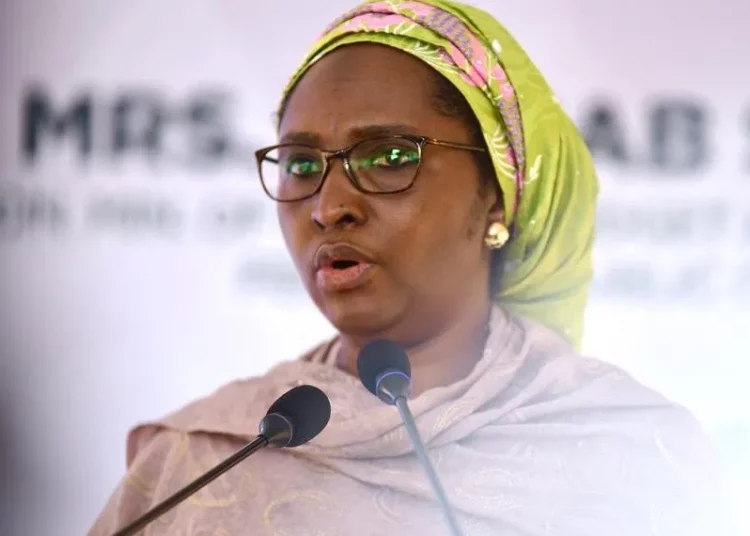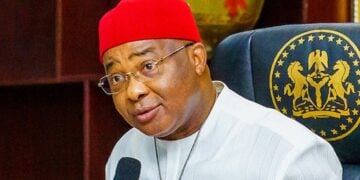The plan by the federal government to go for a fresh loan of N4.68 trillion to fund its 2022 budget would jack up the nation’s debt stock above the current debt rate of N33.107 trillion, if the government’s medium term expenditure framework is approved by the National Assembly.
The move to take more loan will have a direct impact on the net debt per capita of all Nigerians. What that means is that every citizen would be owing N217,190 to local and foreign creditors.
The government unveiled the plan to borrow another N4.89 trillion to finance the estimated deficit in the 2022 budget. The plan is to submit the 2022 budget to the lawmakers by September this year, in line with the government’s January-December budget cycle.
The information is contained in the government’s Medium Term Expenditure Framework/Fiscal Strategy paper for 2022-2024 that was presented by the minister of finance, budget and national, Zainab Ahmed during a public consultation yesterday in Abuja.
The debt per capita figure was arrived at by adding the nation’s total public debt (both federal and sub-national governments) of N32.915 trillion as at 31 December, 2020, the N760,842 billion surplus/deficit in the supplementary appropriation bill 2021 that was recently passed by the National Assembly and the N4.68 trillion borrowed in the 2021 fiscal period to the fresh N4.89 trillion proposed borrowing for 2022, which brings the total debt burden to N43.4 trillion.
This total debt figure is then divided by the country’s population to arrive at per-citizen debt of N217,190. The 2022-2024 MTEF showed that the federal government plans to have a budget expenditure of N13.98 trillion, with a revenue projection of N8.35 trillion, leaving a deficit of about N5.63 trillion. The minister said the deficit would be financed with 50 per cent each from the domestic and foreign market.
The federal government has been facing intense criticism for consistently increasing the nation’s debt burden without a corresponding practical step to reduce the debt-to- revenue ratio. Nigeria’s debt-to-revenue ratio stood at 83 per cent as of December 2020. Fitch Ratings, the world’s major credit rating agency, has projected that Nigeria’s debt-to-revenue ratio will rise to 395 percent by 2022, indicating that growth rate in public debt would far outstrip its revenue Nigeria’s total public debt stock increased from N32.2 trillion as of the last quarter of 2020 to N33 trillion on March 31, 2021. Last year, the federal government took a $3.4 billion drawdown from the International Monetary Fund, the same year the World Bank approved a $2.2 billion loan for the government to drive human capital and economic development across the country.
That was different from the $2.1 billion the bank also gave the current administration to address development challenges, including devastations caused by terrorism in the North East. N900bn for fuel subsidy Details of the three-year expenditure framework has also shown that the federal government is planning to spend an estimated sum of N900 billion on fuel subsidy in 2022.
Finance minister Zainab Ahmed said, sometimes, the federal government spends as much as N150 billion on subsidy in a month, an item that is totally outside of the 2021 budget. The government had said it was spending about N1.4 trillion on subsidy this year alone. The finance minister lamented that subsidy was taking a huge toll on government revenues.
“This is costing us big time. We have a situation where subsidy costs billions. That means NNPC has to use that amount of money to pay for PMS: that is money that the federation account can share; this is money that could have been available for education, health and infrastructure. (With this money) we will reduce our borrowing; we will increase the amounts that states and local governments are collecting.
“We are being penny wise pound foolish to think that by giving this subsidy, that citizens are benefitting. But at the end of the day, the citizens are actually the ones that are carrying the brunt of the wealthy. Some have two, three, four cars and they are the ones that we are subsidizing. It is not helping the farmer who needs a bus from his farm to the market” She said if the government gets rid of subsidy completely, although it is not a popular view with labour unions, a huge amount would be saved for capital projects. “Right now, we are subsidising consumption in Nigeria. We sell at N165 per litre when our neighbours are selling at N500 per litre. It is only the marketers that are benefiting by taking this product from Nigeria and selling it across borders. The common man is not benefiting. “The transition is not an easy one if we have to remove the subsidy. What are the alternatives? What can we provide for citizens? So we are projecting we’ll be paying at least N900 billion subsidy for next year.
“Imagine what we could have done with that amount: how many schools we can build, how many health centres. It is not wise because we are hurting our economy,” the minister said. Spends N973.13bn on capital projects Meanwhile, the finance minister announced yesterday that the sum of N973.13 billion had been released to ministries, departments and agencies of government for the financing of capital expenditure between January and May this year.
She said the releases are cash-backed. In total, N4.86 trillion (representing 92.7 per cent of the prorated budget) has been spent. N1.80 trillion was for debt servicing and N1.50 trillion for personnel cost, including pensions. That excludes government owned enterprises and project-tied debt expenditures. As of May 2021, the central governmentretained revenue was N1.84 trillion, 67 percent of the pro rata target. Government’s share of oil revenues was N289.61 billion (which represents 50 per cent performance), while non-oil tax revenues totalled N618.76 trillion (99.7 percent of pro rata). LEADERSHIP reports the MTEF/FSP focuses on the development priorities of the federal government and ways of raising revenue to fund government expenses for the period covered.
The finance minister said the fiscal authorities are planning to limit the taking of overdraft from the Central Bank of Nigeria (CBN) in compliance with the CBN Act. Ahmed said the draft 2022–2024 MTEF/ FSP had been prepared against the backdrop of global economic recovery amidst improved vaccination outlook and lower incidence of pandemic infection. However, she said the framework shows that there are continuing global challenges in the aftermath of COVID-19.
Noting that non-oil revenue performance has been impressive and heading in the right direction, she promised that government’s efforts will be sustained in this regard. In response to the developments affecting the supply of foreign exchange to the economy, the central bank adjusted the official exchange rate to align with the NAFEX rate, currently N410.15/$1.





